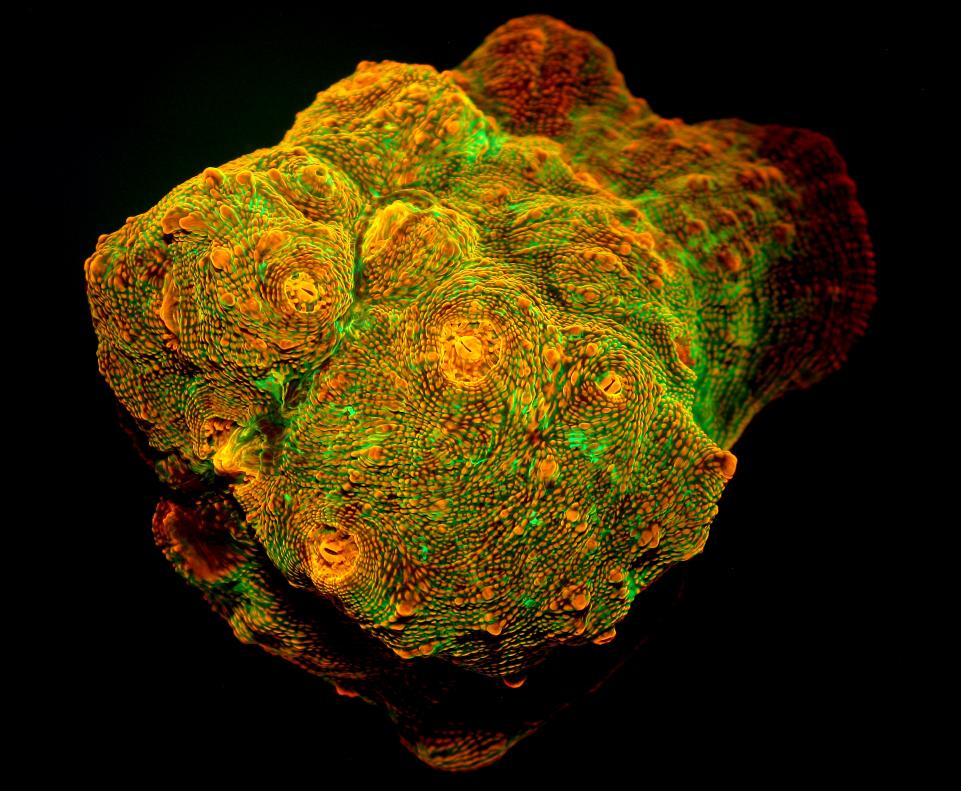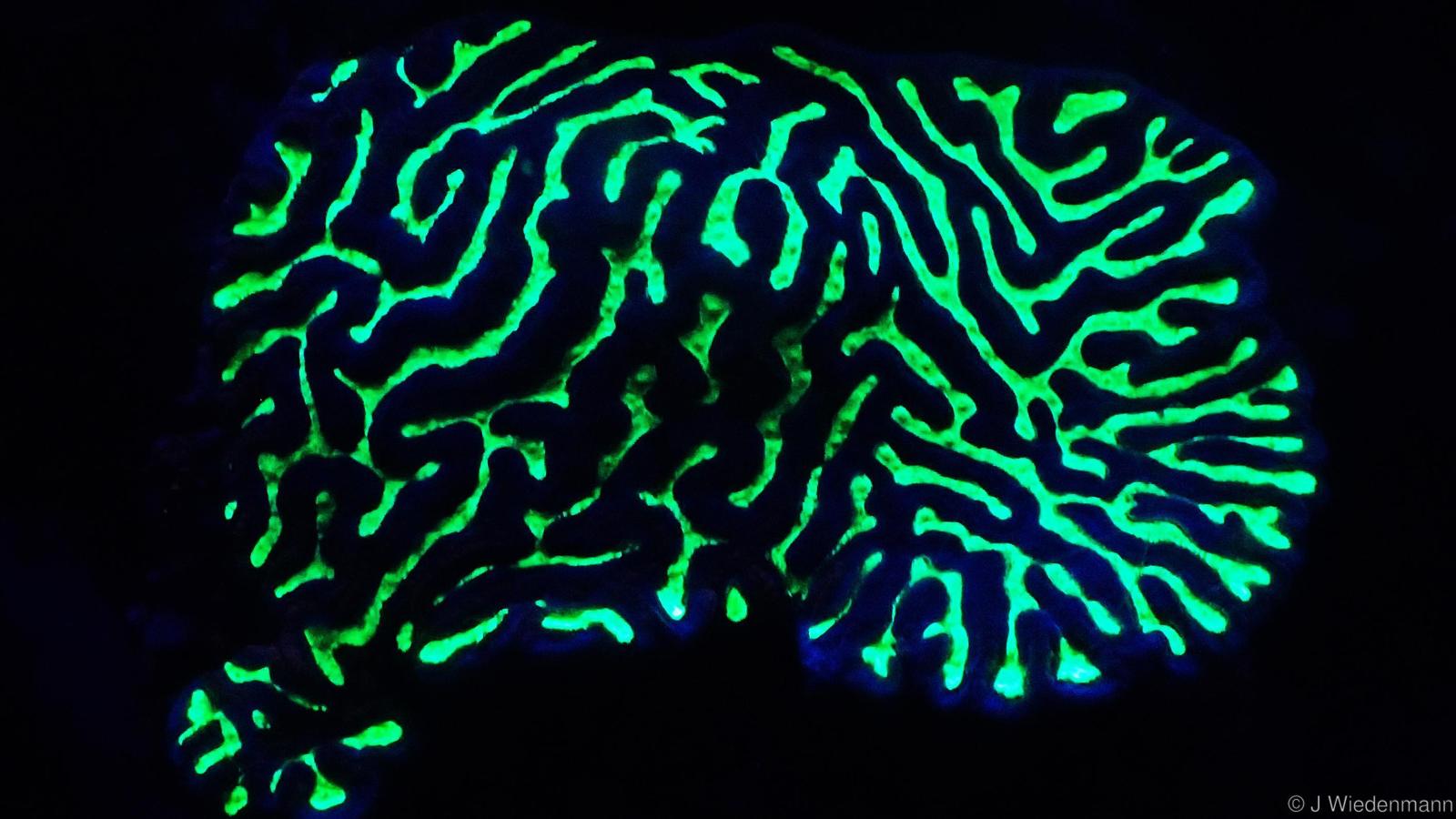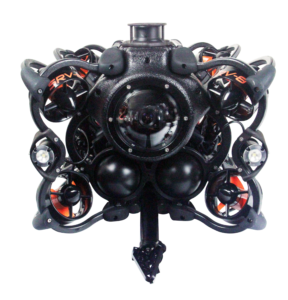
A discovery published by a University of Southampton professor explains how deep sea coral generate their own “sunshine.” Photo credit: E. Smith
One of the deep sea’s prettiest mysteries has been solved.
Most types of coral — the pretty, fluorescent cornerstone species to the Great Barrier Reef and other warm coastal ecosystems — lie right under the surface of the ocean. It’s the perfect spot to capture and convert sunlight into food, which they do with the assistance of symbiotic algae.
In the deep sea, however, the key ingredient is missing. Most sunshine dissipates within two hundred meters under the water, creating a problem for an organism dependent on photosynthesis.
Yet, strangely, coral do live in the deep sea. In the Red Sea, coral below a certain depth glow red and orange.
It’s a hauntingly beautiful color, and according to a study recently published, the key to the coral’s survival in a hostile environment.
A scan across a coral reef in the Red Sea, showing both green and red-orange glowing coral.
A “rainbow of colors” from the deep sea
Joerg Wiedenmann, the lead author on the study, discovered corals could glow by mistake.
According to Newsweek, Wiedenmann placed corals under ultraviolet light while researching sea anemones, and was “blown away by a rainbow of colors.”
Interestingly, the color seemed to correspond to where the coral lived. The deeper the coral lived, the more likely it was to glow red and orange.
This is no coincidence. Little light reaches coral in the deep sea. It soaks up what it gets, but it needs more. So it reflects sun rays back as red-orange light, which is a special type of light that infiltrates the coral’s tissue, where the algae can turn it into food.
Essentially, the coral is doubling the amount of light it gets by creating its own. Double the mileage for the same amount of gas.
It’s all in the family — or not
Corals living in shallow water play a different game. While deep sea corals want to soak up as much light as possible, shallow-water ones want to make sure they don’t get too much. So they convert the sun’s rays into a milder light, such as green. This acts as a sort of “sunscreen” for the coral.

Shallow-water coral glow green to protect themselves against an overabundance of sunshine.
This creates a problem for those who want to protect the shallow-water coral from global warming by placing them further down in the ocean. There isn’t enough light down there for them, especially if they wear sunscreen.
“Depth may not offer a convenient escape road,” Wiedenmann told the New York Times. “We need to make sure their homes in the shallows stay habitable.”


